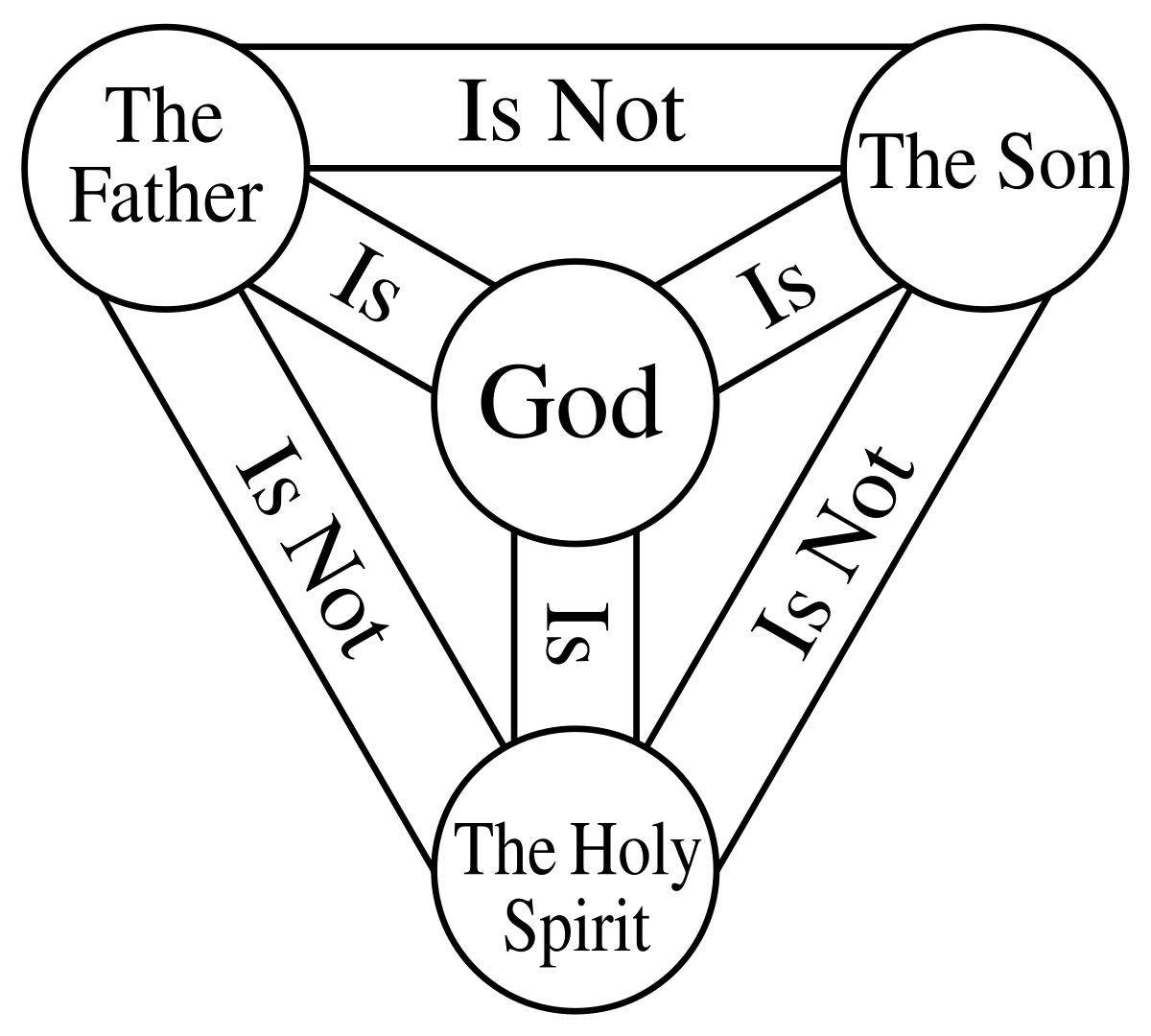“Mere Trinity”: a Simple Test for Authentic Christianity
Clarity in an age of confusion
C.S. Lewis gave us the concept of “Mere Christianity”: the essential beliefs that all authentic Christians share across denominations. But what if we could distill this even further? What if twelve words could reveal whether someone holds to authentic Christian faith?
“One God in union. Three Persons in communion. Trinity with no confusion.”
This isn’t a creed or a theological textbook. It’s a diagnostic tool: a quick test that instantly reveals authentic Christianity from its counterfeits.
The Mere Essentials
When Lewis wrote about “mere Christianity,” he sought the common ground all Christians share. Strip away the differences between churches, cultural expressions, and secondary beliefs: what remains? At the very heart, you find the Trinity.
Our twelve-word formulation captures this essence:
One God, not many: “One God in union”
Three distinct Persons in relationship: “Three Persons in communion”
No contradictions: “Trinity with no confusion”
Remove any element, and you no longer have Christianity; you have something else entirely.
A Diagnostic Tool
Like a doctor checking vital signs, this formulation quickly shows whether someone’s beliefs are healthy or not. It works because every false version of Christianity gets the Trinity wrong.
Consider the symptoms:
Symptom: Denying “One God”
Diagnosis: Polytheism (multiple gods)
Found in: Mormonism (LDS: Latter-day Saints), various polytheistic movements
Symptom: Denying “Three Persons”
Diagnosis: Unitarianism (God as one solitary person)
Found in: Jehovah’s Witnesses, liberal Christianity that reduces Jesus to mere teacher, Unitarians
Symptom: Denying “No Confusion”
Diagnosis: Incoherence (making God self-contradictory)
Found in: Modalism (the belief that God is one person wearing three masks, including Oneness Pentecostalism), New Age mixing of beliefs, philosophical systems that can’t accept God’s unique nature
Beyond Denominational Boundaries
What’s remarkable is how this test transcends denominational lines. Ask a Baptist, Catholic, Orthodox, Presbyterian, or traditional Pentecostal: if they’re authentically Christian, they’ll affirm all three elements. They might disagree on baptism, church government, or spiritual gifts, but on this they stand united.
This is “mere Trinity”: not because the Trinity is mere or simple, but because it’s the bare minimum. You can add to it (and churches do), but you cannot subtract from it and remain Christian.
The Reality Behind the Test
Why does this test work so perfectly? Because the Trinity isn’t a human invention or philosophical construct; it’s simply how God exists. His actual nature is one essence, three persons. This isn’t mysterious in the sense of being illogical; it’s mysterious in the sense of being unique to God.
Every heresy fundamentally misunderstands what kind of being God is. They try to make God fit into human categories:
He must be either one or three (but not both)
Persons must be separate beings (like humans)
Unity must eliminate distinction (like human organizations)
But God’s existence goes beyond these human limitations. Our formulation preserves this truth: God is what He is, without confusion.
Practical Application
This test serves multiple functions in contemporary Christianity:
For Evangelism: When someone says “I believe in God,” you can graciously explore whether they mean the God revealed in Scripture: one essence, three persons.
For Discipleship: New believers need not master systematic theology immediately, but they must grasp this fundamental reality about God.
For Discernment: In an age of spiritual confusion, this quickly identifies whether a teacher, book, or movement stands within orthodox Christianity.
For Unity: When Christians divide over secondary issues, returning to this shared foundation can restore perspective.
“But Isn’t This Too Exclusive?”
Some object that this test is too exclusive. Shouldn’t we focus on what unites all religions rather than what divides?
But authentic love requires truth. If Christianity’s central claim about God’s nature is false, we should abandon it. If true, we cannot compromise it for the sake of false unity. The Trinity isn’t something we can remove and still have Christianity; it’s the Christian understanding of who God actually is.
Mere but Not Minimal
“Mere Trinity” doesn’t mean the Trinity is unimportant; quite the opposite. It means this is the essential foundation. Remove it, and the entire structure of Christian faith collapses:
No Trinity, no Incarnation (who would become incarnate?)
No Incarnation, no Atonement (who could unite God and humanity?)
No Atonement, no Gospel (what would save us?)
Everything distinctive about Christianity flows from the Trinity. That’s why this simple test works; it touches the source from which everything else flows.
Conclusion
“One God in union. Three Persons in communion. Trinity with no confusion.”
In our age of spiritual confusion, these twelve words cut through like a lighthouse beam. They don’t tell us everything about Christianity, but they tell us whether we’re dealing with Christianity at all.
This is “mere Trinity”: not a complete theology course but the essential identity. It’s the basic foundation that makes Christianity what it is. Master these twelve words, and you hold the key to distinguishing authentic faith from its countless alternatives.
Lewis was right: there is a mere Christianity that unites all believers. At its heart is God as Trinity: one in essence, three in person, perfect in communion, without confusion. This isn’t just what Christians believe; it’s what makes us Christian.
For further exploration of “mere Christianity” and the Trinity, see C.S. Lewis’s “Mere Christianity,” Thomas Oden’s “Classic Christianity,” Gerald Bray’s “The Doctrine of God,” and James R. White’s “The Forgotten Trinity” (particularly helpful for understanding modern challenges). For the historic foundations, study the Nicene Creed, the Athanasian Creed, and the Definition of Chalcedon. For those wanting to understand why alternatives fail, Walter Martin’s “Kingdom of the Cults” provides thorough analysis, including the important distinction between Trinitarian Christianity (including traditional Pentecostalism) and non-Trinitarian movements.


